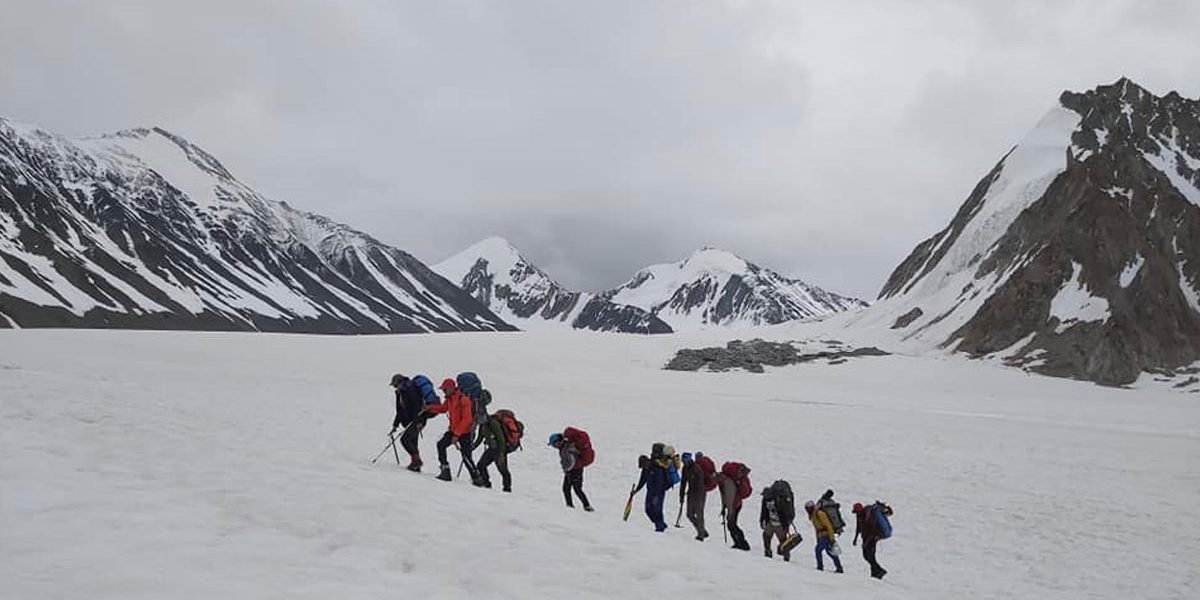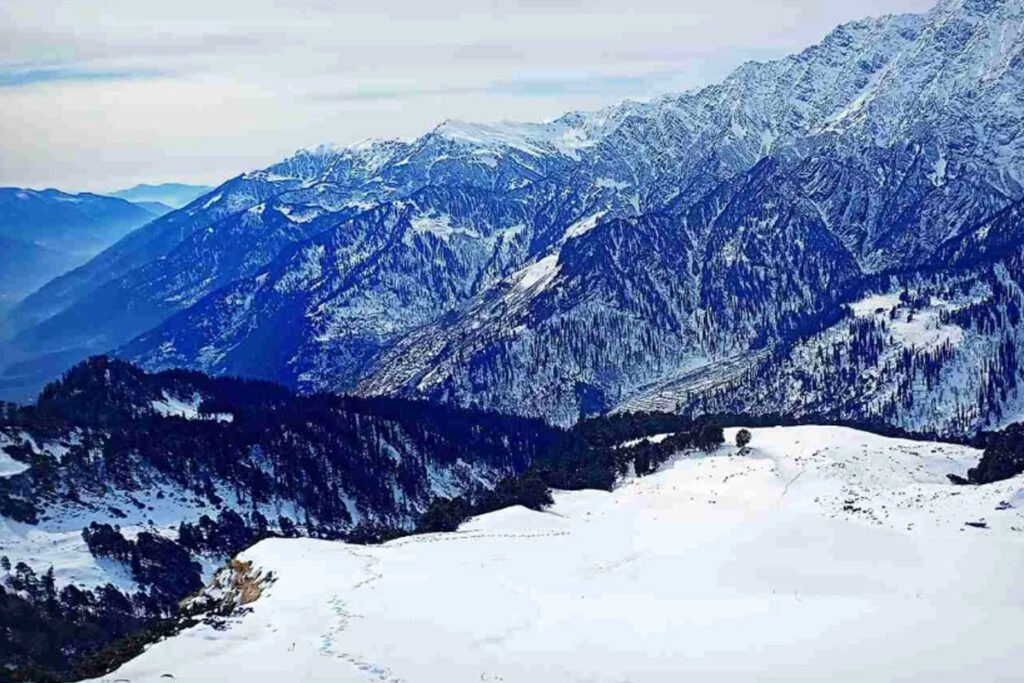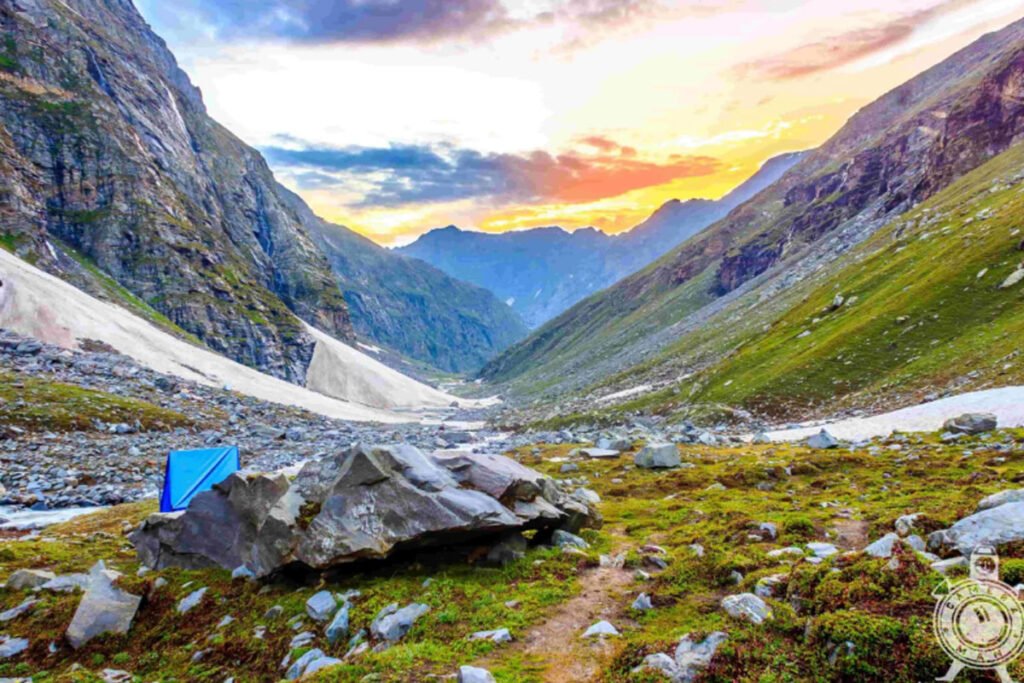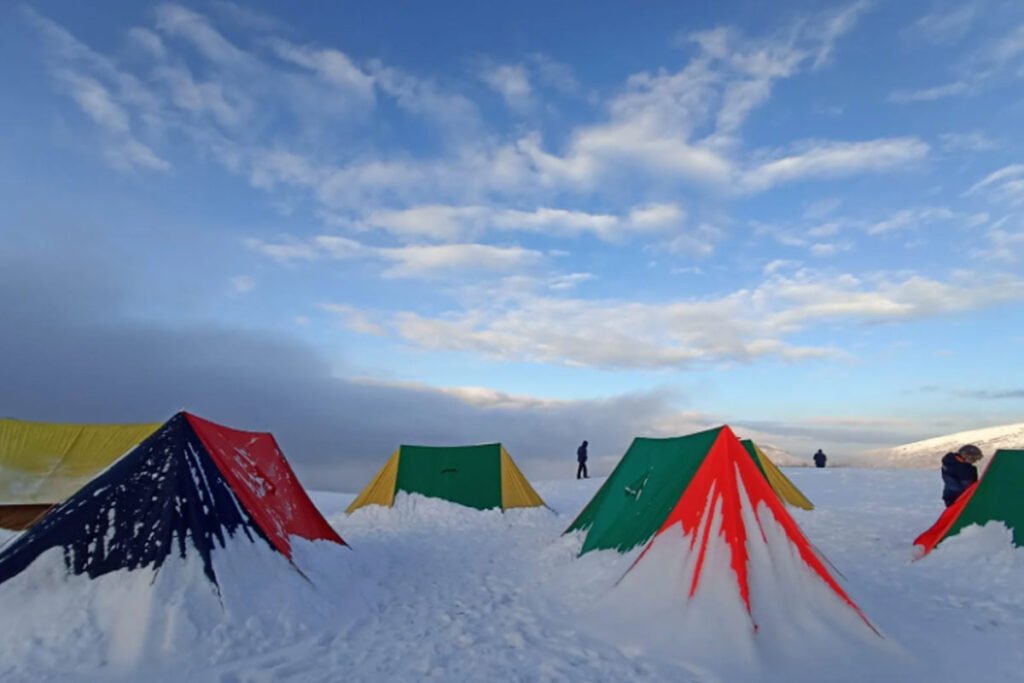
Overview
The Himalayas—home to the world’s highest peaks, ancient trade routes, and sacred valleys—have always attracted dreamers, adventurers, monks, mystics, and mountaineers. For centuries, they have stood like a frozen wall between heaven and earth, daring only the boldest to step forward. From the first attempts to stand on the summit of Everest, to fearless solo treks into unmapped glaciers, the Himalayas remain the ultimate test of human endurance and spirit.
The winter expedition in Himalayas is a wondrous season, which changes the mountains, valleys, and rivers into a wonderland of the clean air. The trails are covered with snow, the lakes are frozen in the sun and peaceful villages are covered in calmness. Winter Expedition in Himalayas provide the ideal outing to the snow-covered routes, alpine meadows, and marvelous mountain views to the adventure seekers and nature lovers.
Best Time to Visit Winter Expedition in Himalayas
The best time to visit for winter expedition in Himalayas November to March. Winter Expedition in Himalayas is not a single-season experience—it varies depending on altitude, region, snow conditions, road access, and the type of expedition. Winter Expedition in Himalayas is not just a season—it’s a different world. The high peaks turn silent under blankets of snow, rivers freeze into glistening ice highways, and mountain villages settle into a peaceful rhythm far away from the tourist rush of summer. For adventure lovers, this is the most thrilling time to explore the Himalayas through winter treks, ice climbs, snow expeditions, wildlife trips, and extreme alpine adventures.
Major Winter Expedition in Himalayas
Winter expedition in Himalayas are listed below :
1. Chadar trek
The Chadar Trek, also known as the Frozen River Trek, is one of the most unique and thrilling winter expeditions in Himalayas. Every year, during peak winter, the Zaskar River in Ladakh freezes into a glass-like sheet of ice, creating a frozen trail used by locals for centuries.
The trek is possible only in peak winter, from mid-January to mid-February, when the ice is thick & stable enough to walk on. The Chadar Trek is not just a trek — it’s an expedition into a frozen world where mountains meet ice, silence meets endurance, and nature shows its rawest form. It demands mental toughness, physical fitness, and proper gear, but the reward is an experience you will never forget.
2. Triund Trek
The Triund Trek is one of the most popular and accessible Himalayan treks, ideal for beginners, weekend travelers, solo trekkers, and nature lovers. Located in the Dhauladhar range of Himachal Pradesh, Triund offers a breathtaking view of snow covered peaks on one side and the beautiful Kangra Valley on the other.
With a well-marked trail, forest walk, ridge climb, and stunning sunset/sunrise views, Triund is the perfect introduction to Himalayan trekking — no prior experience required. The Triund Trek is the perfect Himalayan escape for those who want a short, scenic, affordable, and rewarding adventure.
3. Friendship Peak Expedition
Friendship Peak is one of the most popular trekking peaks in Himachal. Friendship Peak offers a non-technical but physically demanding climb, making it the perfect choice for trekkers who want to step into the world of real Himalayan expeditions. The peak is located near Manali, making access easy while still offering a true mountaineering experience — snow slopes, rope work, glacier walk, crevasse zones, and an unforgettable summit push.
If you have conquered easy Himalayan treks and are ready for the next level, Friendship Peak makes the perfect transition from trekking to true alpine climbing.
4. Hampta Pass Winter Trek
The Hampta Pass Trek is one of the most dramatic crossover treks in Himachal Pradesh. The winter version of Hampta Pass Trek is a completely different experience. In winter, the trail transforms into a snow-covered world, campsites freeze, rivers turn into ice beds, and the pass becomes a true high-altitude challenge.
Located at 14,000 ft., Hampta Pass Trek connects the lush green Kullu Valley with the stark, snow-filled Lahaul Valley, creating one of the most unique landscape transitions in the Indian
Himalayas. The Hampta Pass Winter Trek offers everything— snow adventure, dramatic landscapes, offbeat Himalayan peace, and just the right amount of challenge. If you want to experience the Himalayas in full winter glory without going to an extreme altitude, this trek is a perfect choice. It’s not just a trek — it’s the winter version of a classic Himalayan crossover route.
5. Patalsu Peak Winter Trek
Patalsu Peak Manali (4,200m) is one of the most rewarding winter treks in Himachal Pradesh, located near Solang Valley and just a short drive from Manali. Known for its beginner-friendly gradient, dense alpine forests, and breathtaking summit view of Hanuman Tibba, Friendship Peak, and the entire Solang Valley. This trek offers an authentic Himalayan winter experience without extreme technical challenges. If you’re looking to step beyond basic snow hikes and experience a true winter summit, Patalsu Peak is the perfect start.
Patalsu Peak Manali is more than just a trek — it’s the first real taste of winter mountaineering. With its stunning forest trails, snow covered meadows, and a rewarding summit, it offers everything an aspiring Himalayan trekker dreams of. If you’re trekking in winter near Manali, Patalsu Peak deserves a spot on your bucket list.
Essential Gear For Winter Expedition in Himalayas
1. Layered Clothing System
- 2–3 pairs of woollen socks
- Waterproof gaiters
- Waterproof windproof jacket & Pants
- Quick-dry trekking pants
- Merino wool or synthetic thermals
- Neck gaiter / balaclava
2. Footwear: Cold-Rated Boots Matter
- High-ankle waterproof trekking boots
- Snow boots for campsite use
- Anti-slip crampons or micro spikes
- Warm woolen and compression socks
3. Hand & Head Protection
- Insulated waterproof gloves (outer)
- Merino wool liner gloves (inner)
- Beanie / thermal cap (covers ears)
- UV protection sunglasses / snow goggles (to prevent snow blindness)
4. Sleeping System (For Sub-Zero Nights)
- Sleeping bag
- Sleeping bag liner (adds extra 5–8°C warmth)
- Insulated sleeping mat + foam mat combo
- Portable hot water bottle for inner warmth at night
5. Trekking Gear & Safety Equipment
- Trekking poles
- Ice axe (for technical or glacier routes)
- Avalanche beacon, probe & snow shovel Headlamp (with extra batteries)
- Multi-tool / Swiss knife
6. Personal Care & Health Essentials
- SPF 50+ sunscreen & lip balm
- Quick-dry towel & biodegradable wet wipes
- Rehydration salts, energy bars, chocolates
- First aid kit (Diamox, painkillers, blister bandages, ORS, etc.)
- Personal medication & altitude sickness tablets
7. Hydration & Cooking Gear
- Insulated water bottle or thermos (prevents freezing)
- Lightweight stove if self-supported expedition
- Freeze-dried meals / instant food packs
- Fire starter & waterproof matchbox
8. Backpacking & Storage Gear
- 60–75L trekking backpack with rain cover
- 20–30L daypack for summit push
- Dry bags / zip-locks for electronics & clothing
- Lightweight duffle bag
9. Electronics & Navigation
- GPS device / offline maps on phone
- Power bank 20,000 mAh or solar charger
- Camera gear with extra batteries (they drain faster in cold)
- Satellite phone (for remote regions like Spiti, Zanskar, Ladakh)
10. Optional But Useful Add-Ons
- Hand & toe warmers
- Snow gaiters / knee pads
- Trekking umbrella (for snowfall)
- Lightweight book / journal
- Flag or scarf for summit photo
FAQ Of Winter Expedition in Himalayas
Qns : Is it safe to go for a winter expedition in Himalayas?
Ans : Yes, it is safe to go for a winter expedition in Himalayas but only with proper preparation, certified guides, and suitable winter gear. Winter conditions can be extreme, so safety depends on experience level, weather planning, and choosing the right route.
Qns : What is the best month for a winter expedition in the Himalayas?
Ans : November to March is the best month for a winter expedition in the Himalayas.
December – Best for beginner winter treks and snow views
January–February – Best for hardcore expeditions like Chadar, Snow Leopard trails, frozen lakes, and ice climbing
March – Late winter, safer weather, good for high-altitude training treks
Qns : Do winter expeditions in Himalayas require permits?
Ans : Yes, many routes require permits from forest, tourism, IMF, or local authorities (depends on the state/country).
Qns : What are the biggest risks during winter expeditions in Himalayas?
Ans : The biggest risks are during winter expeditions in Himalayas:
- Hypothermia & frostbite
- Altitude sickness (AMS, HAPE, HACE)
- Sudden snowstorms, whiteouts
- Slippery ice / avalanche zones
- Road closures due to snowfall
Qns : Can I do a winter expedition in Himalayas without a guide?
Ans : Not recommended. Winter trails can disappear under snow, navigation becomes difficult, and emergencies require expert handling.
Qns : Can beginners join the Chadar Trek Winter Expedition in Himalayas?
Ans : Officially yes, but it requires strong fitness, cold endurance, and mental preparation. The trek runs over a frozen river at –25°C to –30°C, so it is not recommended for first-time trekkers.
Qns : How dangerous are winter expeditions in Himalayas?
Ans : Winter expeditions in Himalayas involve risks like frostbite, hypothermia, altitude sickness, and sudden weather changes. With a certified guide, proper gear and acclimatization, the risks are manageable. Solo winter trekking is not recommended.
Qns : Can I do a winter expedition in Himalayas if I am not used to snow or cold?
Ans : Yes, but you must be mentally prepared and physically trained. Even beginners can adapt with proper winter layering, hydration, and guidance. Cold tolerance builds gradually.
Qns : How do we stay warm during night camping in winter expedition in Himalayas?
Ans :
- Use a -10°C to -20°C sleeping bag (depending on region)
- Add an insulated sleeping liner
- Drink warm water before sleeping
- Wear thermal base layers, wool socks, and a cap
- Keep batteries, phone, & water bottle inside the sleeping bag
Qns : Are winter expedition in Himalayas expensive?
Ans : Yes, winter expedition in Himalayas are expensive. They are usually costlier than summer treks due to:
- Extra gear (crampons, snow boots, thermal layers)
- High-altitude winter equipment & guides
- Limited transport and food availability in remote areas
- Special permits for protected zones
Qns : Is wildlife spotting possible on winter expedition in Himalayas?
Ans : Yes! In Ladakh and Spiti, winter is ideal for spotting snow leopards, Himalayan wolves, blue sheep, ibex, and rare birds. But wildlife tours require expert naturalists and patience.
Qns : Will I get network or electricity during the winter expedition in Himalayas?
Ans : Most winter routes have no network except BSNL in some villages. Electricity is rare — carry:
- Power banks
- Headlamps
- Solar chargers (if sunlight available)
Qns : Can I join a group winter expedition in Himalayas instead of going solo?
Ans : Yes, most winter expeditions are group-based for safety. Many certified operators run fixed departure batches with guides, equipment, and rescue plans.
Conclusion
A winter expedition in Himalayas is not only about snow covered peaks, frozen rivers, or silence that feels sacred—it’s about rediscovering your own limits in some of the harshest yet most breathtaking landscapes on Earth. The Himalayas in winter are raw, powerful, and untouched by the rush of mainstream tourism. Winter offers in clarity — icy blue skies, sharp mountain silhouettes, and a sense of solitude that only a true explorer can understand.
It is a journey for those who do not simply want to see mountains, but to feel them. If you’re prepared, trained, and willing to step beyond comfort, a winter expedition will not just change how you travel it will change how you see yourself.
Location
Social Media
Google Review
Trustindex verifies that the original source of the review is Google. This camping beyond the beautiful words.honest staff and friendly owner and beautiful loction good vibes.Posted onTrustindex verifies that the original source of the review is Google. It's amazing. Love the way they treat.Posted onTrustindex verifies that the original source of the review is Google. Best place to stay and the best views and the service is awesome neat and clean Roshan bhai and Jony bhai are like family membersPosted onTrustindex verifies that the original source of the review is Google. Perfect location , very good tent and place cleanliness also the staff is good and polite And the location is just so so so peaceful , calm and soothingPosted onTrustindex verifies that the original source of the review is Google. Very poor service.Incompetent staff.Rude behaviour by owner.Pale dirty drinking water.Very unhygienic toilets.No basic amities in rooms. Poor food.Worst experience.Posted onTrustindex verifies that the original source of the review is Google. Great location. great experience in tent stay with good food


